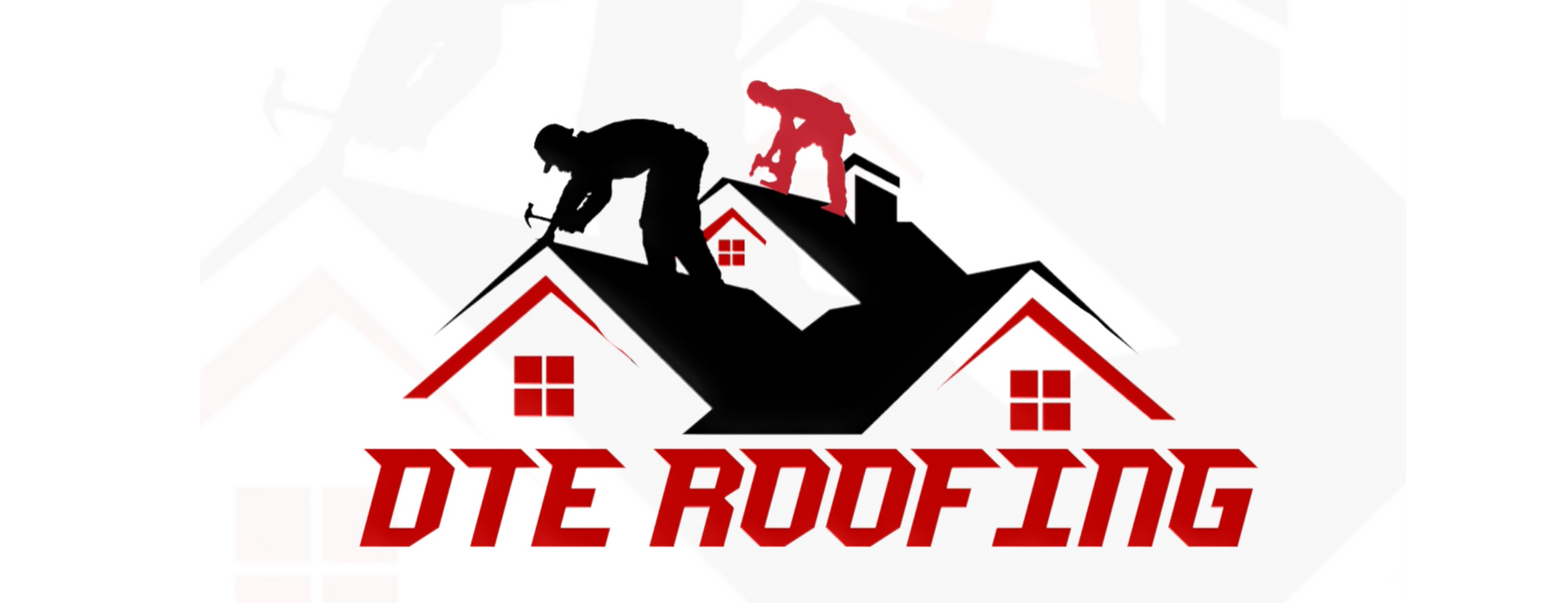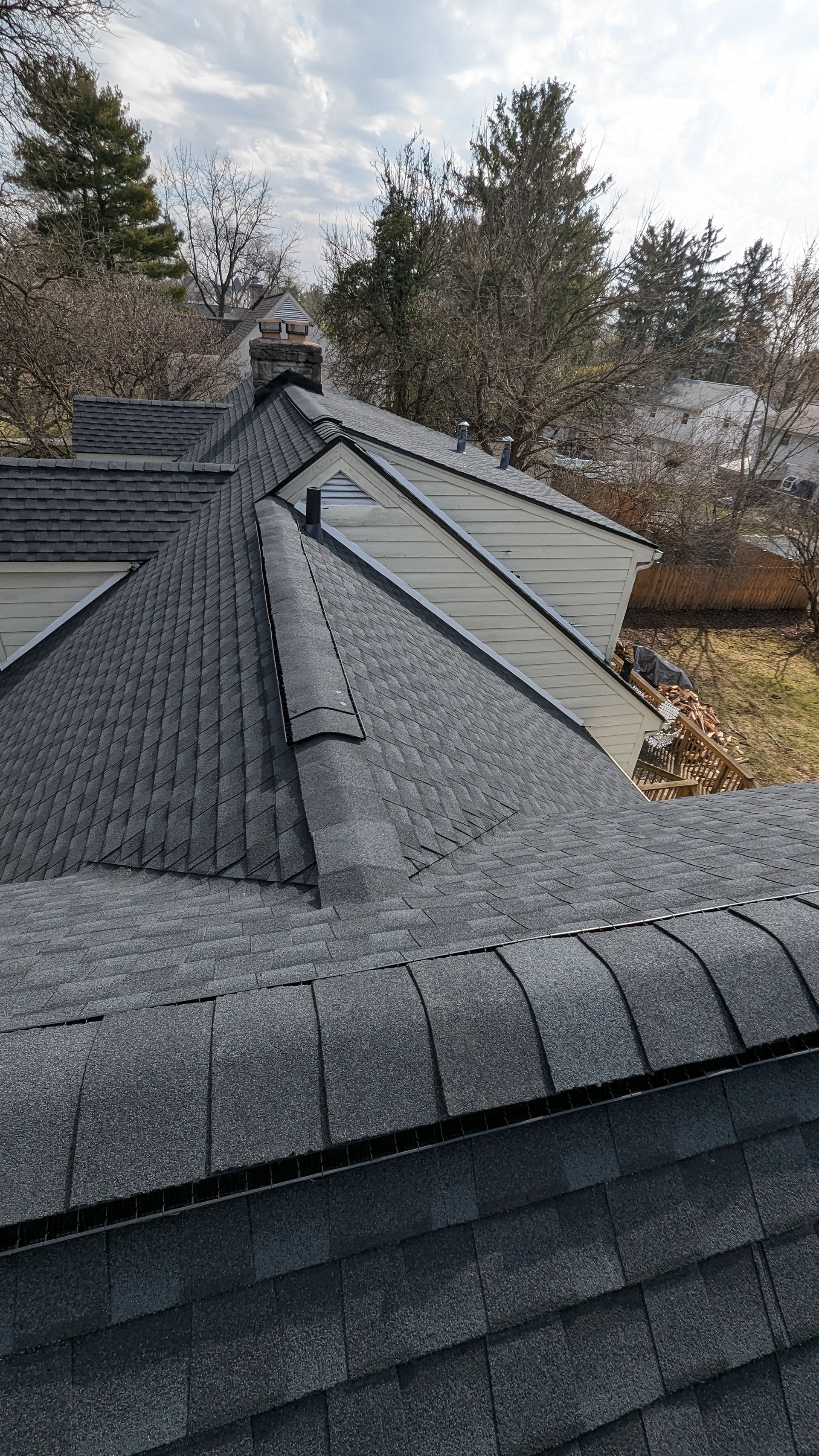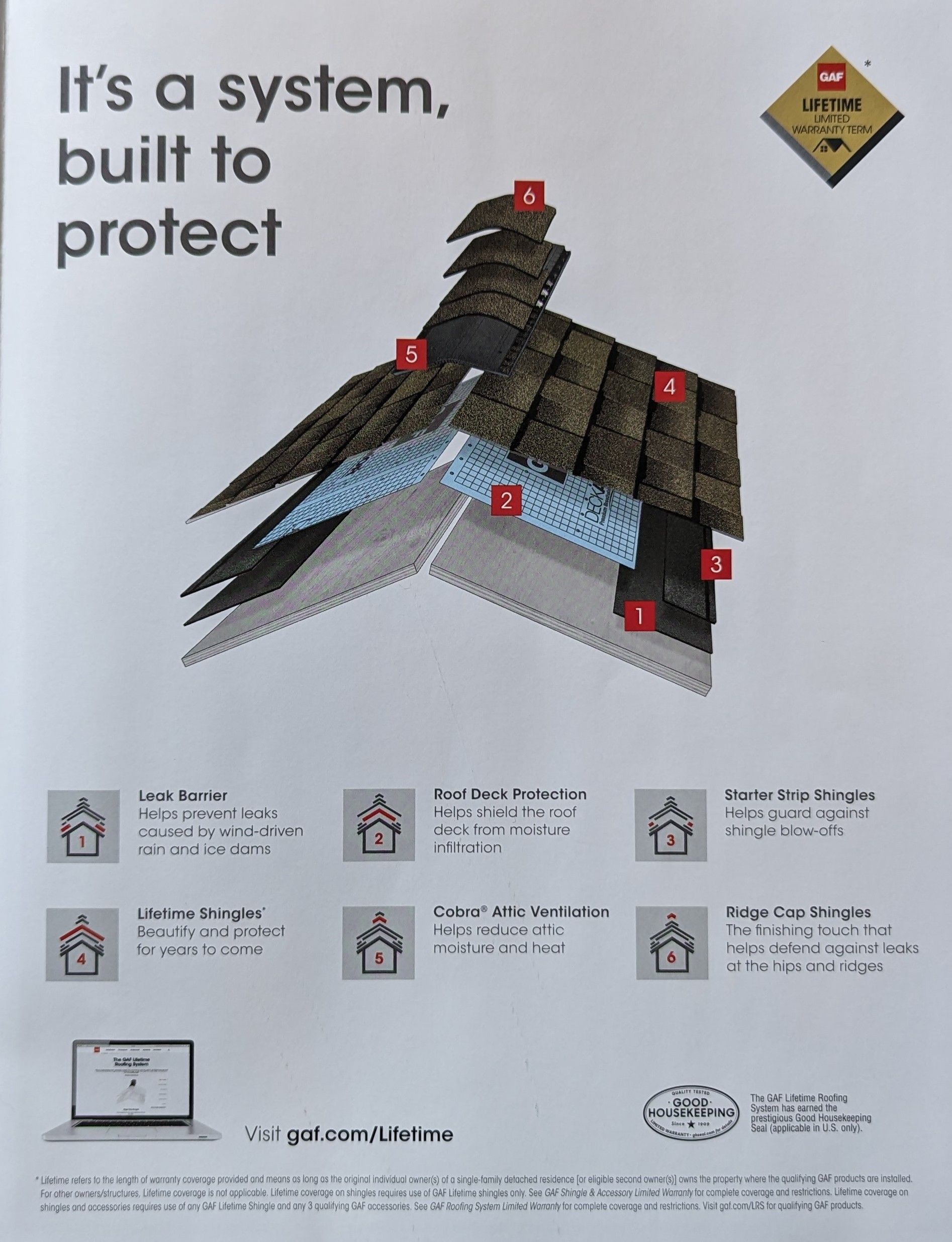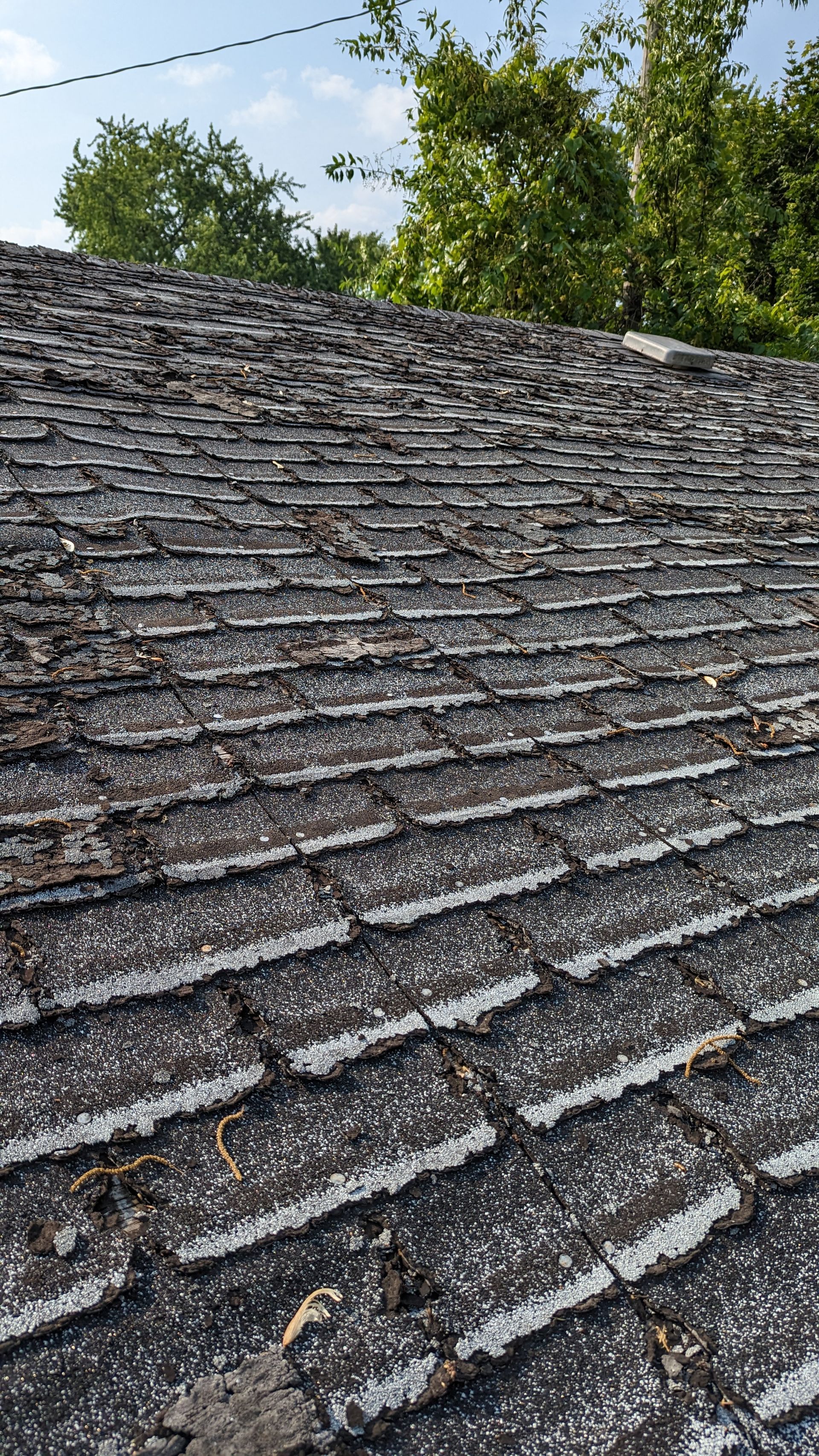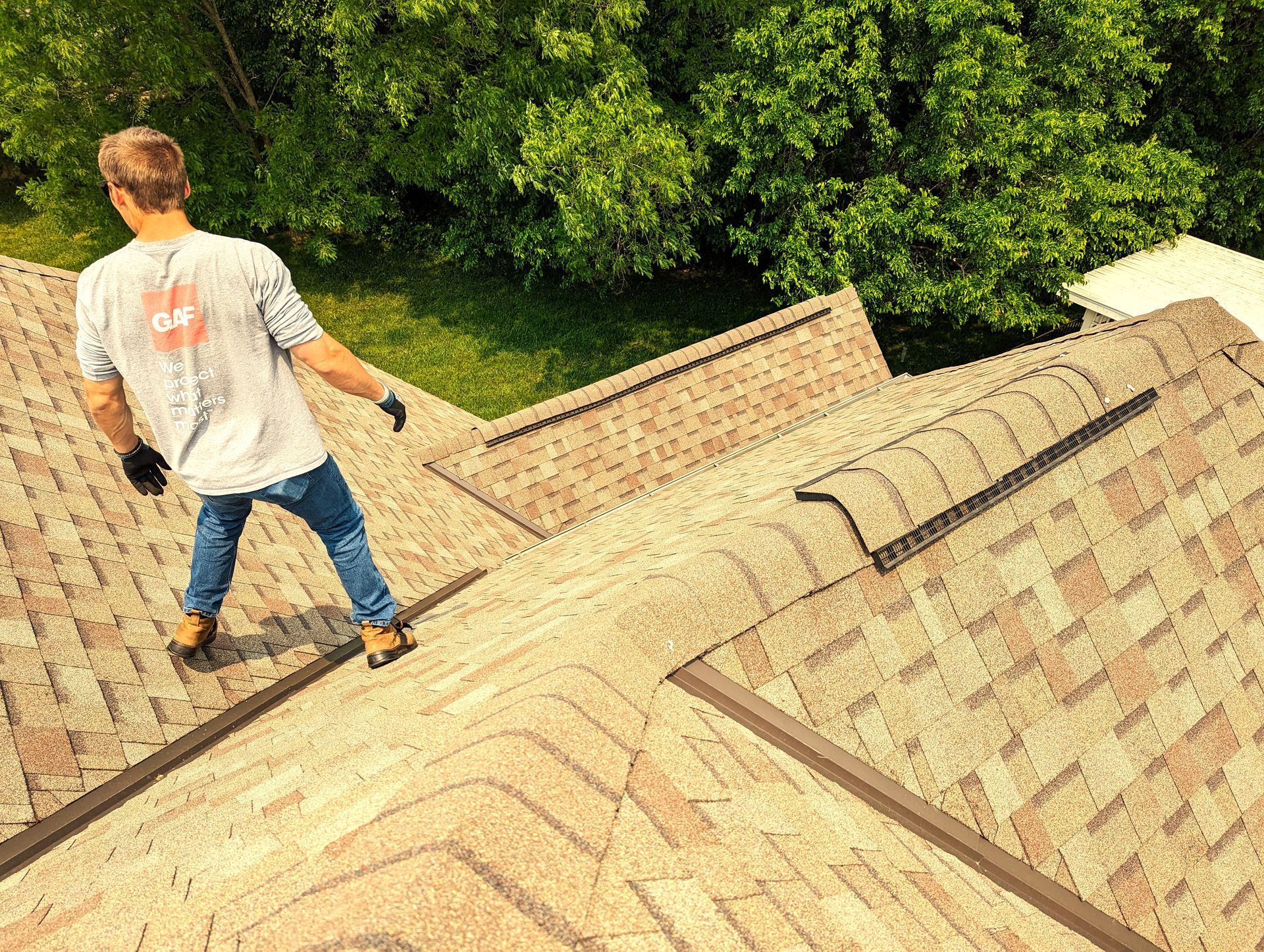How Much Does A New Roof Cost?
How much should I expect to pay for a new roof?
There are several variables that go into the cost of a roof replacement project. This article explores some of these variables so that you can better understand what goes into the prices when comparing estimates from different contractors.
Some of the largest factors of price include:
- Brand of materials being used and their quality.
- The size of your roof.
- The pitch of your roof (how steep it is).
- Complexities of the job.
- Reuse vs replacement of flashings, edgings, etc.
Brand of materials being used and their quality:
- When looking at roof replacement estimates, this is the first variable you want to focus on. What products are they using on my roof? Do some research on the manufacturers and products being recommended by the company you are looking at working with. There are pros and cons to almost every option and most contractors in town only use one product, when in most cases, there are numerous better options on the market.
- You get what you pay for. Cheaper products are cheaper, better products are more expensive.
- Did the contractor who gave you an estimate clearly indicate what brand and type of each individual roof component is that they are using? What type of ice and water shield are they using? What type of underlayment? Ridge cap shingles? What type of shingles? Each of these components have different levels of quality and there are cheap off brand products available in each of category that should be avoided, but occasionally are snuck into your job by contractors trying to save a few hundred bucks here and there.
The size of your roof:
- Roof pricing is largely determined by the square footage of your roof surface. In roofing terms, you'll hear statements like, "Your roof is 34 squares". A "square", is equal to 100 square feet, so a 34 square roof equals 3,400 total square feet of roof surface.
- Larger roofs mean more materials, and more labor hours, both will impact the total price of your project.
The pitch of your roof (how steep it is):
- How steep your roof is plays a role in the cost of replacement because the steeper your roof is, the more challenging it is to replace.
- Steeper roofs require special safety precautions which take time to set up and generally increase the length of installation time.
- Workers must be tied off with harnesses and occasionally lifts may be used for extremely steep sections.
- It's more difficult to walk around on a steep roof.
- Getting materials loaded and dispersed on steep roofs is more challenging.
- Steep roofs equal more liability for the contractor, so the prices generally are reflective of this risk.
Complexities of the job:
- Every roof is a different design, and certain roof designs present more complexities than others.
- Valleys, hips, ridges, dormers, skylights, chimneys, vents, low slope sections, "dead valleys", roof to wall intersections (sidewalls and end walls), gable cornices, pitch transitions, close proximity to neighboring houses, electrical lines, 2-story, 3-story, etc.
- All of these complexities add challenge to jobs and may impact the price of your roof replacement project.
- If your roof has many complicated facets (sections of different roof slopes), a large amount of additional materials will need to be ordered (called a waste factor), to account for all the areas where cuts will need to be made to install your new roof.
- More materials = higher cost. Waste materials cannot be salvaged as they are usually cut in ways that deem them unusable for any other purpose on your job. Typically on a 30 square roof, you may actually need 32-35 squares of shingle material.
- Not only is the cost of using more materials impacting the price, but there is additional labor needed to load those excess materials onto the roof and to manipulate/cut to fit them around complex areas.
Reuse vs. Replacement of flashings, edgings, etc.
- Almost every roof has some sort of metal flashings around different parts of the roof. These flashings are intended to be the LAST line of defense around the most susceptible areas of water infiltration. Metal flashing will be installed around chimneys, skylights, HVAC vents, roof to "sidewall" or "endwall" intersections, and any other area of the roof where a component penetrates the roof surface.
- One of the most important parts of a roof project is ensuring these flashings are in good condition and are able to function as intended. This means the flashing should be free of any rust or corrosion, and should not be excessively mangled or bent out of the proper shape, and it must be free of any nail holes in critical areas.
- Very commonly we see flashings with all of the above issues present being reused on a reroof project as opposed to taking the time to replace them. Not only is this actually a violation of a building code, it leaves your roof system with less than adequate protection in the MOST vulnerable areas.
- If you are looking at a basic estimate given to you by a roofer, and it is several thousand dollars cheaper than another, this could be a reason why. You may be looking at one estimate that is to essentially just remove your shingles and put new ones on, and another that factors in fabricating all new flashings and installing them. Flashing should (almost) never be reused.
- Replacing flashing can be incredibly complicated endeavors depending on what material the exterior of your home is cladded with. Homes with vinyl or aluminum siding, must have the siding detached and reset at all side walls and endwalls in order to install new step flashing. Homes with brick walls require us to actually cut into the brick mortar joints in order to properly tuck the flashing into the walls. Homes with Hardie boards, LP SmartSide, or cedar wood siding, may either need the boards detached and reset (very difficult to do without damaging them), or they may need to be cut into 6-8 inches off the roof and a custom fascia board set in place to cover up the new step flashing. Houses with stucco can present incredible challenges, as the stucco will actually need to be torn out a few inches away from the roof line, and a qualified stucco repair service will need to come in after the fact to spray in new stucco to match those areas.
- There are different kinds and qualities of flashing materials too. From the basic color finished aluminum or galvanized steel, up to custom lead flashing, and all the way to the most costly being custom copper flashings.
- We find excessive nail holes and other issues a vast majority of the time during tear-off, that others are okay with simply covering up.
In conclusion, doing a full roof replacement project properly and in a way that will leave you with highest quality product/quality of installation possible, may not be the cheapest estimate that you receive. This is something that we at DTE Roofing LLC run into on occasion. We've had customers call us out to inspect leak issues with a 2-3 year old roof, where they went with the cheapest estimate. When we get there and uncover larger issues left behind by the previous installer, it's never easy for us to let the owner know that the only proper solution is to tear the entire roof off again to fix the underlying issues. Don't get stuck paying for a roof twice. While we certainly do not gouge any of our pricing, there is an old saying amongst some of the better contractors, "if you think my roof is expensive, wait until you see what a cheaper one will cost you."
